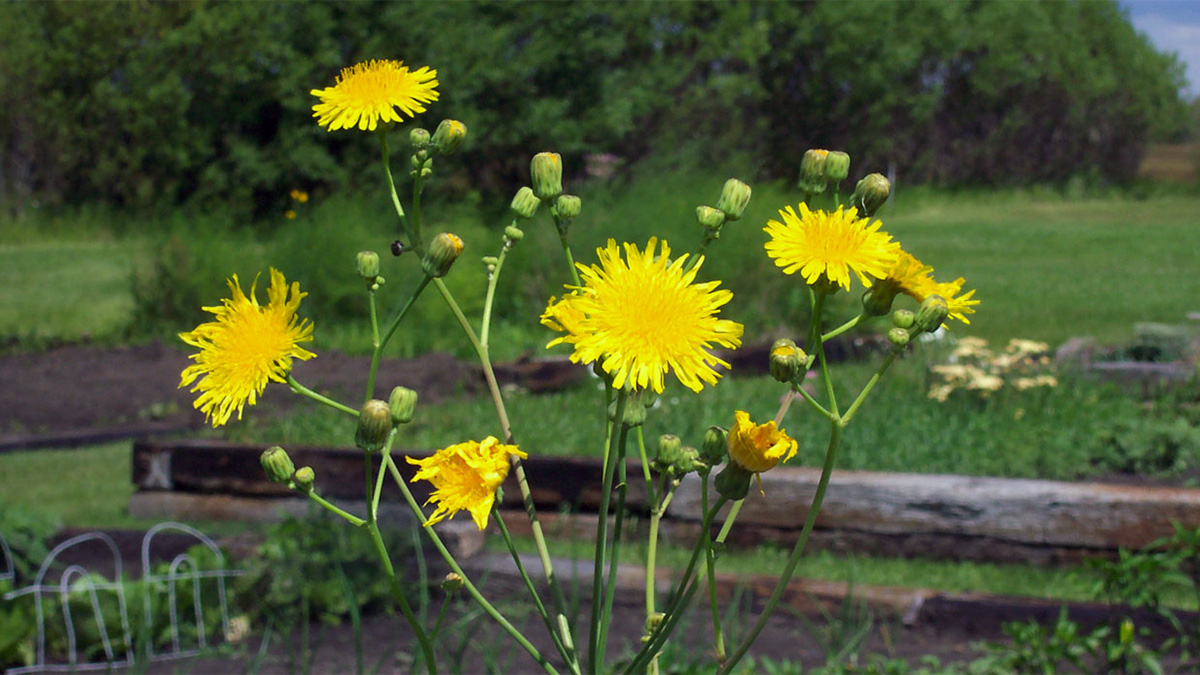Natural Methods to Control Weeds in the Garden

Weeds can quickly take over even the most well-tended garden, but that doesn’t mean you need chemicals to fight back. With a few natural strategies, you can keep your beds clean, your plants healthy, and your soil thriving. Here are five proven methods farmers and home gardeners alike use to control weeds the natural way.
Related: Common Weeds that are Actually Beneficial for Your Garden
Mulching to suppress weed growth
Mulching is one of the most effective natural methods to prevent weeds from sprouting. By covering the soil with a thick layer of organic material, you block sunlight that weed seeds need to germinate. It also helps retain moisture and improves soil health over time.
Common mulch options include shredded bark, straw, grass clippings, and shredded leaves. Each has its advantages depending on your garden style and plant types. Apply mulch about two to three inches deep around plants, avoiding direct contact with stems to prevent rot.
Reapply mulch as it breaks down or is disturbed. In vegetable beds, you can refresh it between plantings. Using mulch not only reduces weeds but also gives your garden a cleaner, well-maintained appearance.
Hand pulling and hoeing regularly
Manual weeding remains one of the most reliable ways to keep your garden tidy. Pulling weeds by hand is most effective after a rain when the soil is loose and roots come out more easily. A simple hand tool or hori hori knife can make the task faster and less strenuous.
For larger areas, a stirrup or Dutch hoe can be used to slice weeds at the soil surface. Hoeing is especially helpful for young weed seedlings before they establish deeper roots. Regular weeding prevents seeds from maturing and spreading further.
The key is consistency. Set aside time weekly to inspect garden beds and remove unwanted growth. Tackling weeds while they are small saves you time and effort later in the season.
Using natural ground covers and living mulches
Ground covers and living mulches crowd out weeds by filling bare soil with desirable plants. These low-growing species act as a living barrier, leaving little room for weed seeds to germinate. They also help regulate soil temperature and retain moisture.
Options like creeping thyme, white clover, sweet alyssum, or even certain herbs can be planted between rows or around perennials. Choose varieties that are well-suited to your zone and garden conditions. For vegetable gardens, fast-growing crops like radishes can serve as temporary living mulch.
Keep an eye on competition between your crops and living mulch. Avoid overly aggressive ground covers that could overwhelm smaller plants. With proper spacing, this method reduces weed pressure and supports a healthier garden ecosystem.
Boiling water and vinegar treatments
Boiling water is an effective spot treatment for weeds growing in cracks, sidewalks, and hard-to-reach areas. Carefully pour the water directly onto the weed crown to scald the plant and roots. This method is immediate and chemical-free but should be used with caution near ornamental plants.
Vinegar can also be used to kill weeds, especially on sunny days. Household vinegar (5% acetic acid) works on young weeds, while horticultural vinegar (20%) is stronger and more effective on tougher growth. Spray directly on the leaves, avoiding soil and nearby garden plants.
Both methods are non-selective, meaning they harm any plant they touch. Always apply in calm weather and spot-test if you’re unsure. These approaches are best suited for patios, pathways, or isolated patches rather than large beds.
Smothering with newspaper or cardboard
Smothering weeds with newspaper or cardboard is an excellent method for clearing garden beds or preparing new areas. By blocking sunlight and air, the layers prevent weeds from growing while allowing soil organisms to thrive underneath. Over time, the materials break down and enrich the soil.
To start, lay down several sheets of newspaper or pieces of cardboard directly over the weedy area. Overlap the edges to prevent gaps, then cover with a few inches of mulch or compost to hold it in place. Water the layers well to help them settle.
This technique is useful in both vegetable and ornamental gardens and can be combined with other methods like mulch or living ground covers. It works slowly but effectively, making it a great solution for long-term weed suppression.
Bonus tip: Strengthen soil and garden health
Healthy soil grows stronger plants that naturally outcompete weeds. When your plants thrive, they create shade and reduce the space available for weed seeds to take hold. Incorporating compost improves soil texture, fertility, and water retention.
Good plant spacing also plays a role in weed prevention. Crowded beds reduce sunlight on the soil surface, limiting weed growth. Choose companion plants that complement each other and fill in gaps without overcrowding.
By building healthy soil and thoughtful plant communities, you create a garden that works with nature to minimize weeds. Prevention and balance are more effective than constantly reacting to weed outbreaks.
Common mistakes in natural weed control
One common mistake is applying too little mulch. Thin layers allow light to reach the soil and encourage weed growth. Use at least two inches, and reapply as needed throughout the season.
Letting weeds go to seed can undo months of hard work. Even a few neglected plants can release thousands of seeds into your garden. Stay vigilant, especially during peak growing periods.
When using vinegar, some gardeners forget how quickly it can harm nearby plants. Be precise and only use it in areas where drift will not cause damage. Lastly, weed control is not a one-time job. Early and consistent effort is key to long-term success.
Frequently asked questions
Do natural methods really work as well as herbicides?
Natural methods can be just as effective when used consistently and in combination. While they may require more hands-on effort, they avoid the risks and environmental impact associated with chemical herbicides.
How often should I reapply mulch?
Mulch should be refreshed every few months, especially if it starts to break down or thin out. In high-traffic areas or where weeds are persistent, consider checking and topping it up more frequently.
Can I combine several methods?
Yes, combining methods like mulching, ground covers, and manual weeding offers the best results. Layering strategies strengthens your garden’s defenses and reduces overall weed pressure.
Are there safe ways to kill weeds in gravel paths?
Boiling water and vinegar are great options for gravel areas. You can also smother weeds with cardboard or landscape fabric beneath the gravel to block regrowth from underneath.
Conclusion
Controlling weeds without chemicals is completely possible with the right approach. By combining mulching, manual weeding, and a few simple natural tools, you can protect your garden while supporting healthy soil and plant growth. Stick with these methods and you’ll enjoy a weed-free space that’s both beautiful and eco-friendly.
